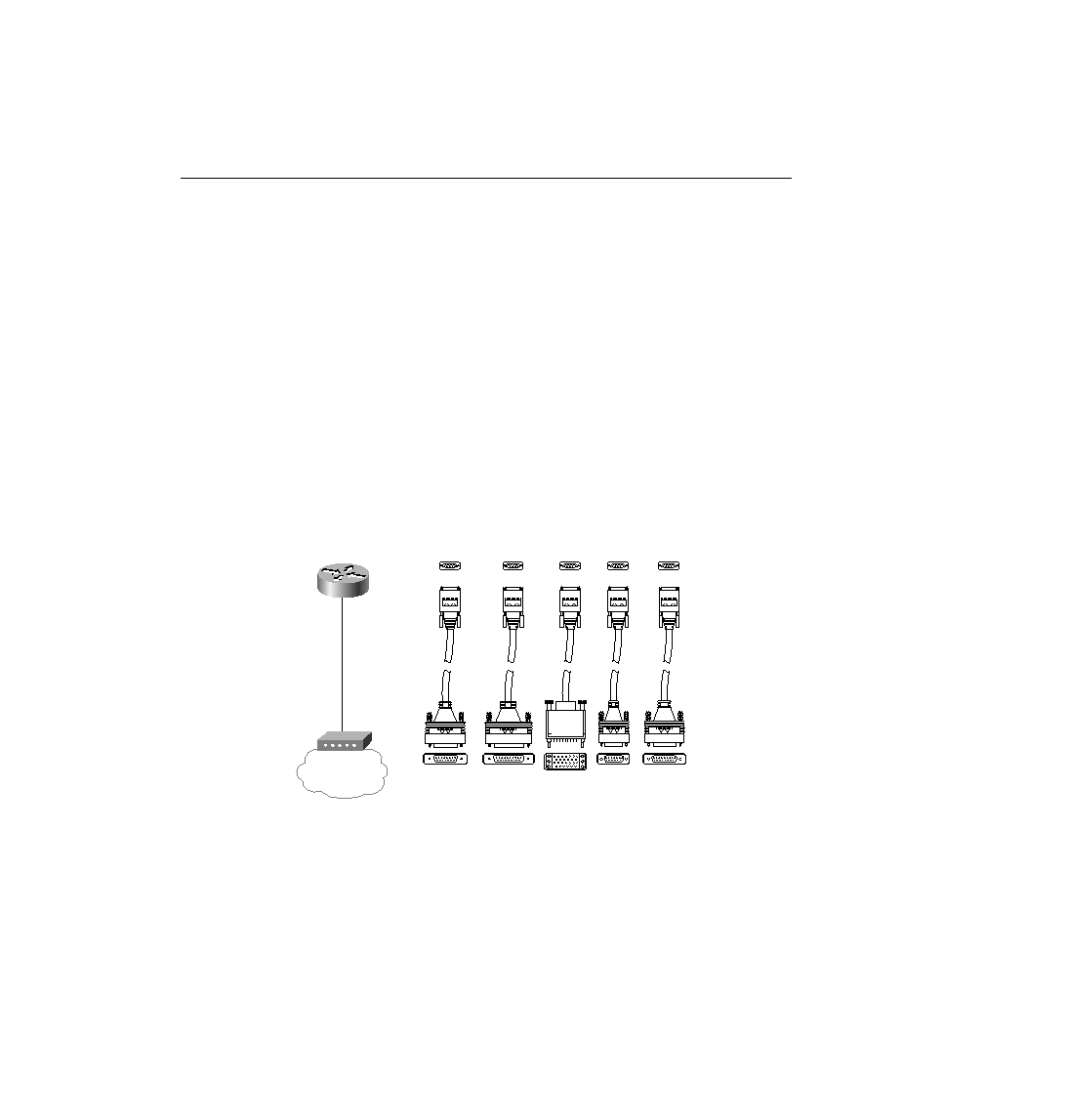
low; Cisco recommends not using compression if this is the case.
to be in a reasonable range; for perspective, however, I simply let a ping command run on the
Seville router for a few minutes to create the output. No true user traffic was generated for
Example 8-2. Watching for compression driving the CPU utilization too high will be important.
interfaces. For any of the point-to-point serial links or Frame Relay links in this chapter, all that
is needed on the router is a synchronous serial interface. Traditionally, this interface is a 60-pin
D-shell connector. This interface must then be cabled to a DSU/CSU, which in turn is connected
to the cable supplied by the service provider. Figure 8-3 shows a typical connection, with the
serial cabling options listed.
signaling protocols used on WAN interfaces.
DSU